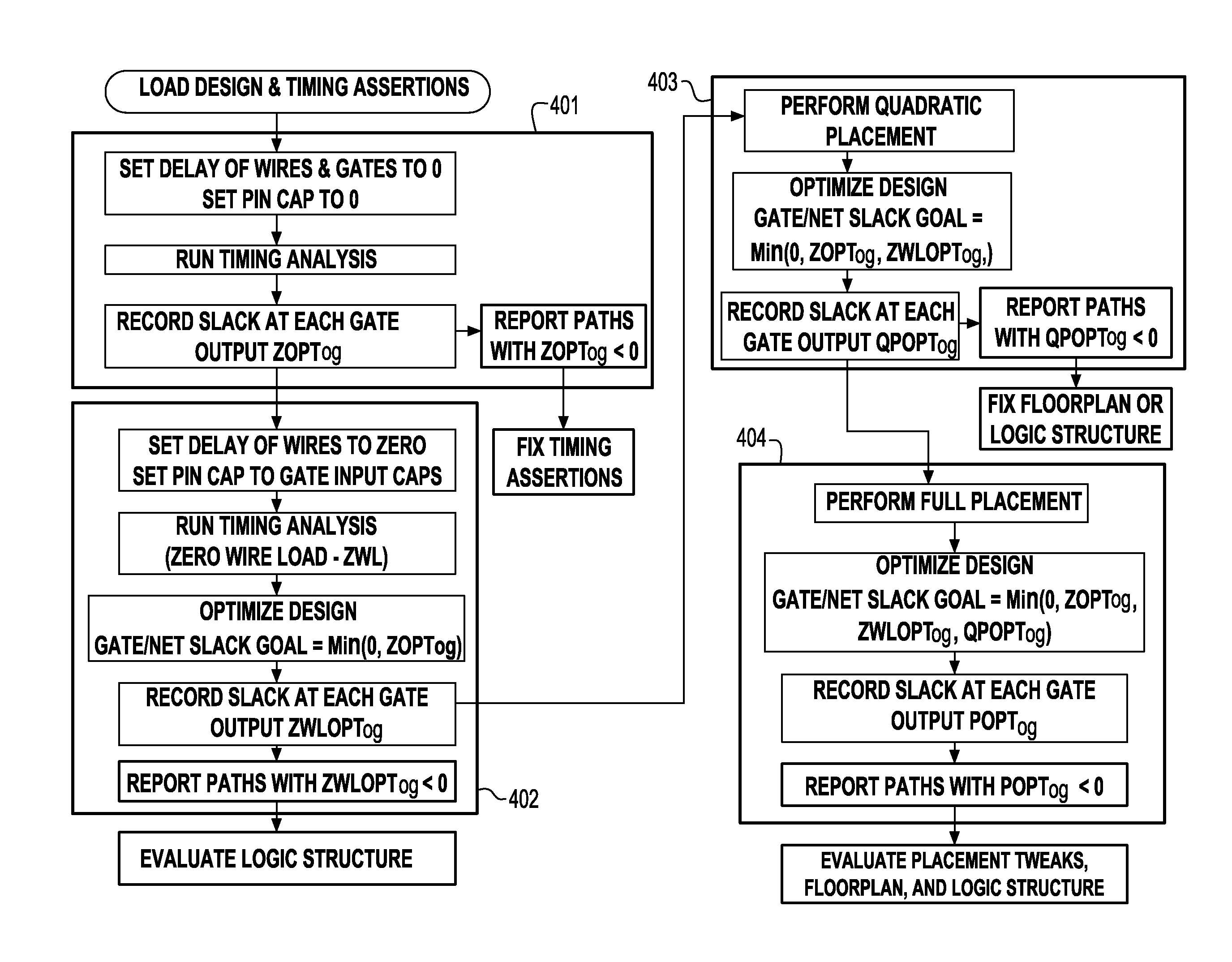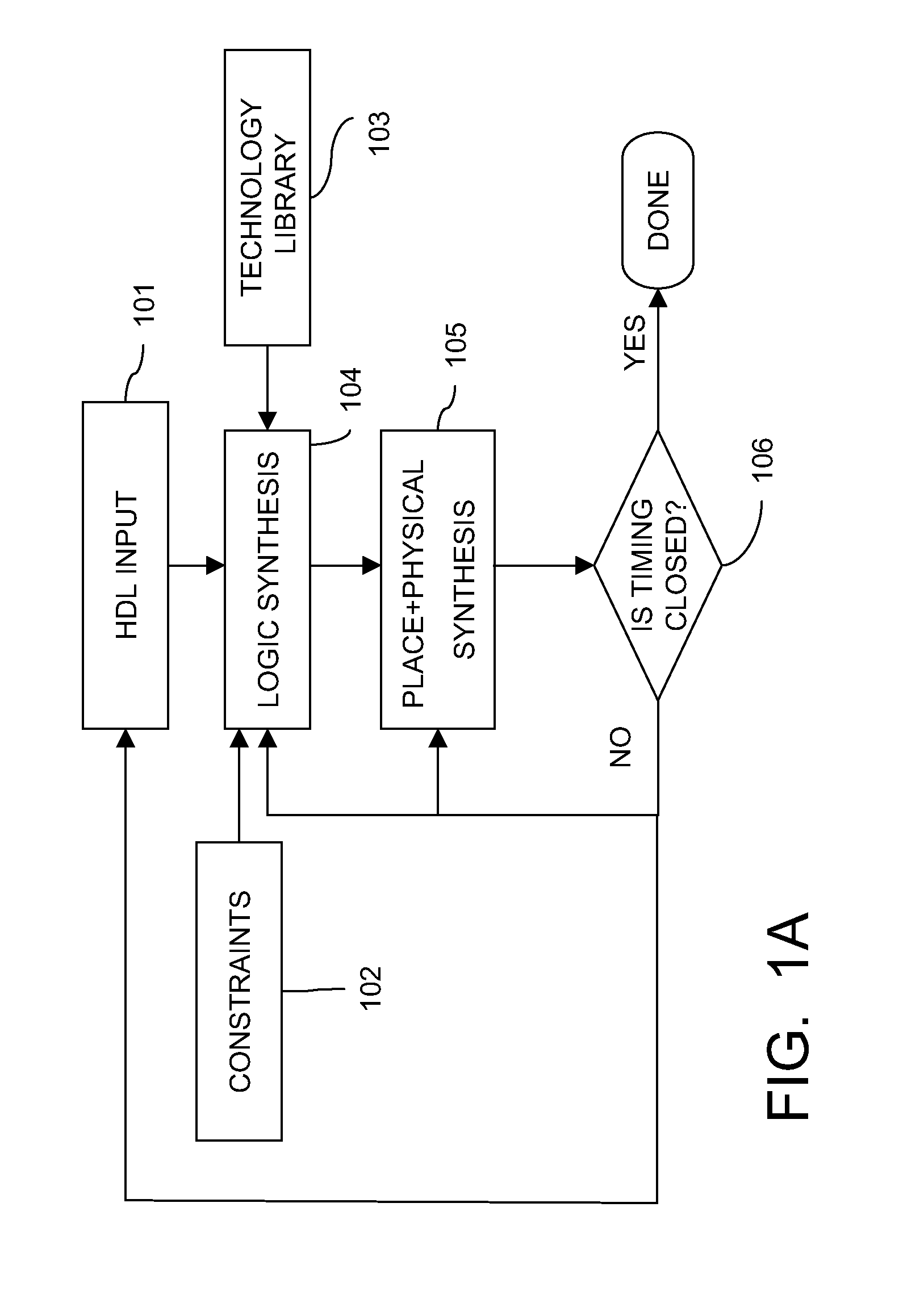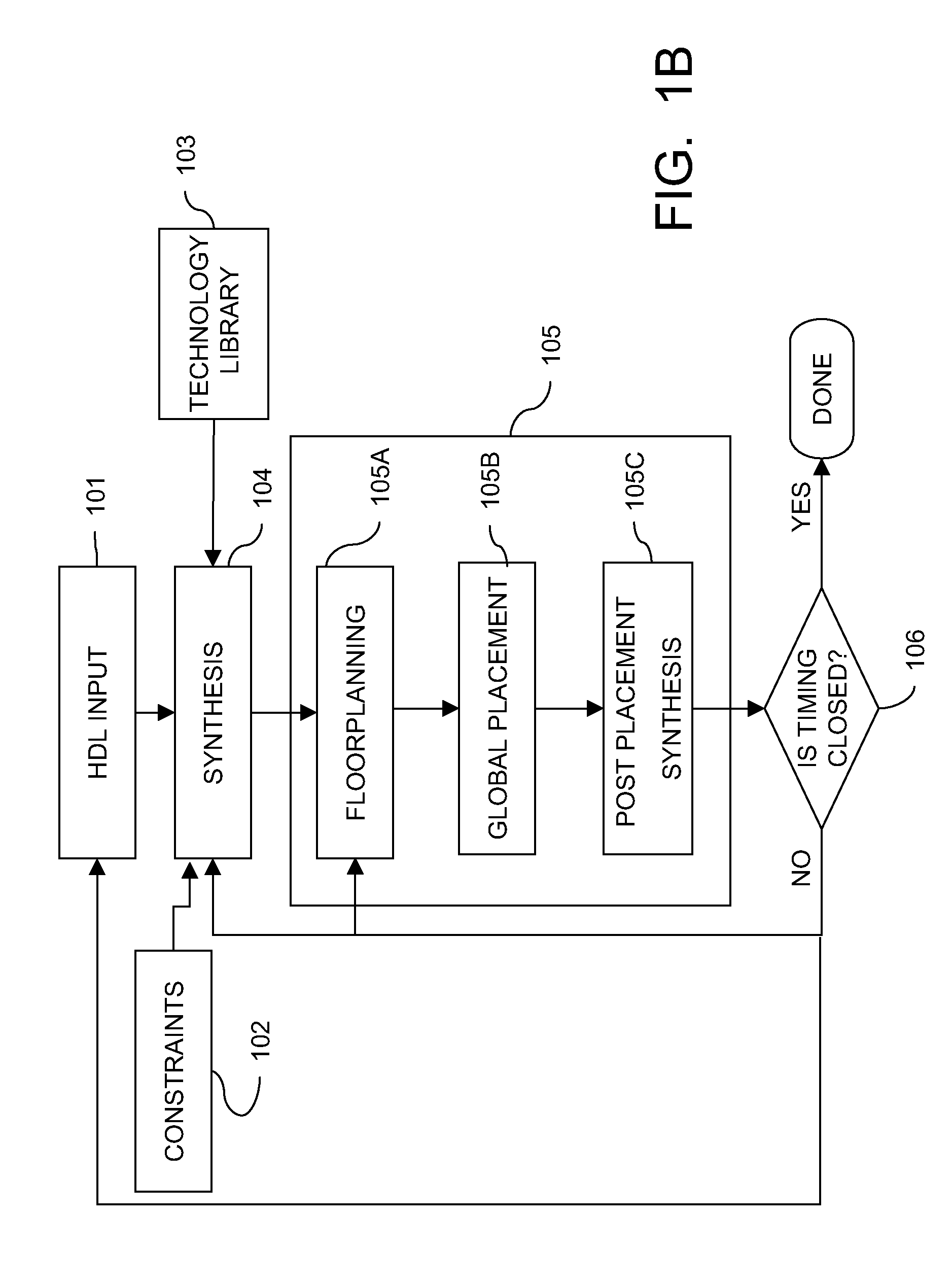Method for eliminating negative slack in a netlist via transformation and slack categorization
a technology of netlist and negative slack, applied in the field can solve the problems of reducing the efficiency and marginal improvement, so as to improve the timing of vlsi chip design during placement and synthesis.
- Summary
- Abstract
- Description
- Claims
- Application Information
AI Technical Summary
Benefits of technology
Problems solved by technology
Method used
Image
Examples
example
[0046]Referring to FIG. 4, there is shown an exemplary implementation corresponding to the preferred embodiment. The technique is not limited to the timing environments or transformations to be illustrated hereinafter. The design is first loaded and timing assertions are applied. For the purposes of the illustrative example, it will be assumed that all transformations belong to a single category.
[0047]In the initial step, the contrived timing environment is setup (step 401) with all the gates and wires having zero delay and all the pin capacitances being forced to zero. This environment is designed to expose slack failures that are caused by timing assertions since no other netlist elements will contribute to the circuit delay. Timing analysis is run on the design to obtain the list of slacks at each timing point. This list is referred to as the ZOPTog list. The list of negative slacks ZOPTog is reported to the user so that timing assertion adjustments can be made. This information ...
PUM
 Login to View More
Login to View More Abstract
Description
Claims
Application Information
 Login to View More
Login to View More - R&D
- Intellectual Property
- Life Sciences
- Materials
- Tech Scout
- Unparalleled Data Quality
- Higher Quality Content
- 60% Fewer Hallucinations
Browse by: Latest US Patents, China's latest patents, Technical Efficacy Thesaurus, Application Domain, Technology Topic, Popular Technical Reports.
© 2025 PatSnap. All rights reserved.Legal|Privacy policy|Modern Slavery Act Transparency Statement|Sitemap|About US| Contact US: help@patsnap.com



